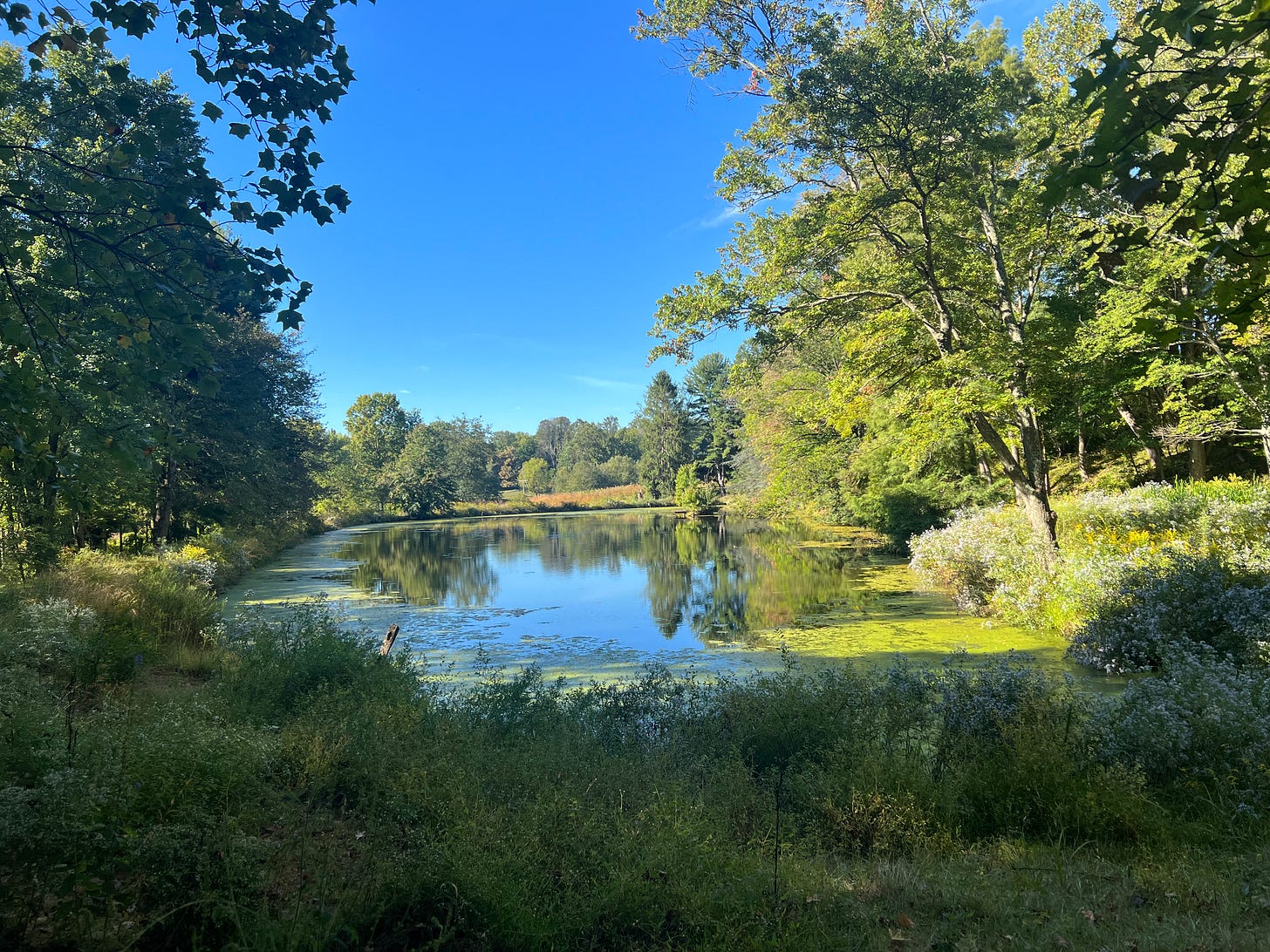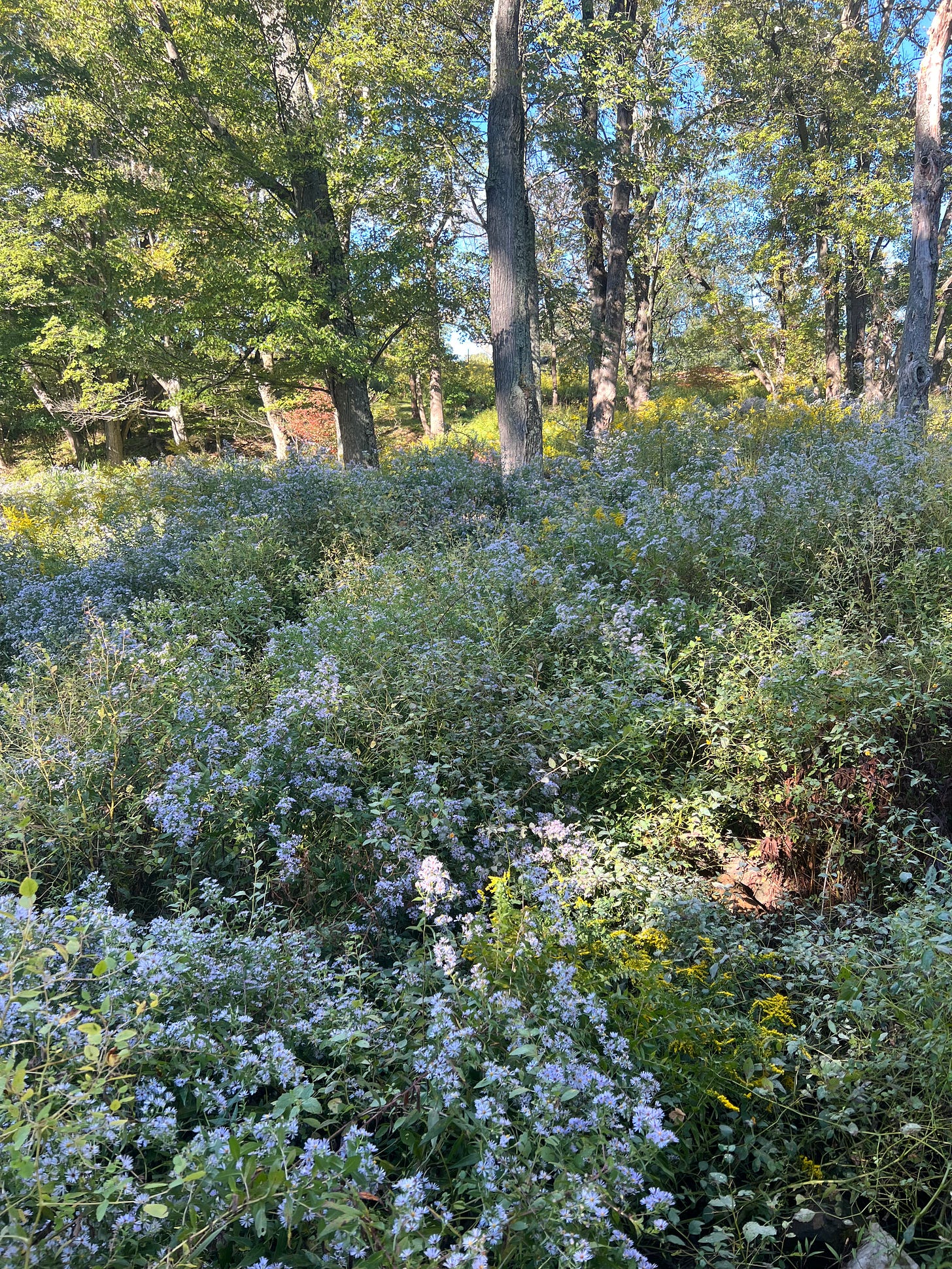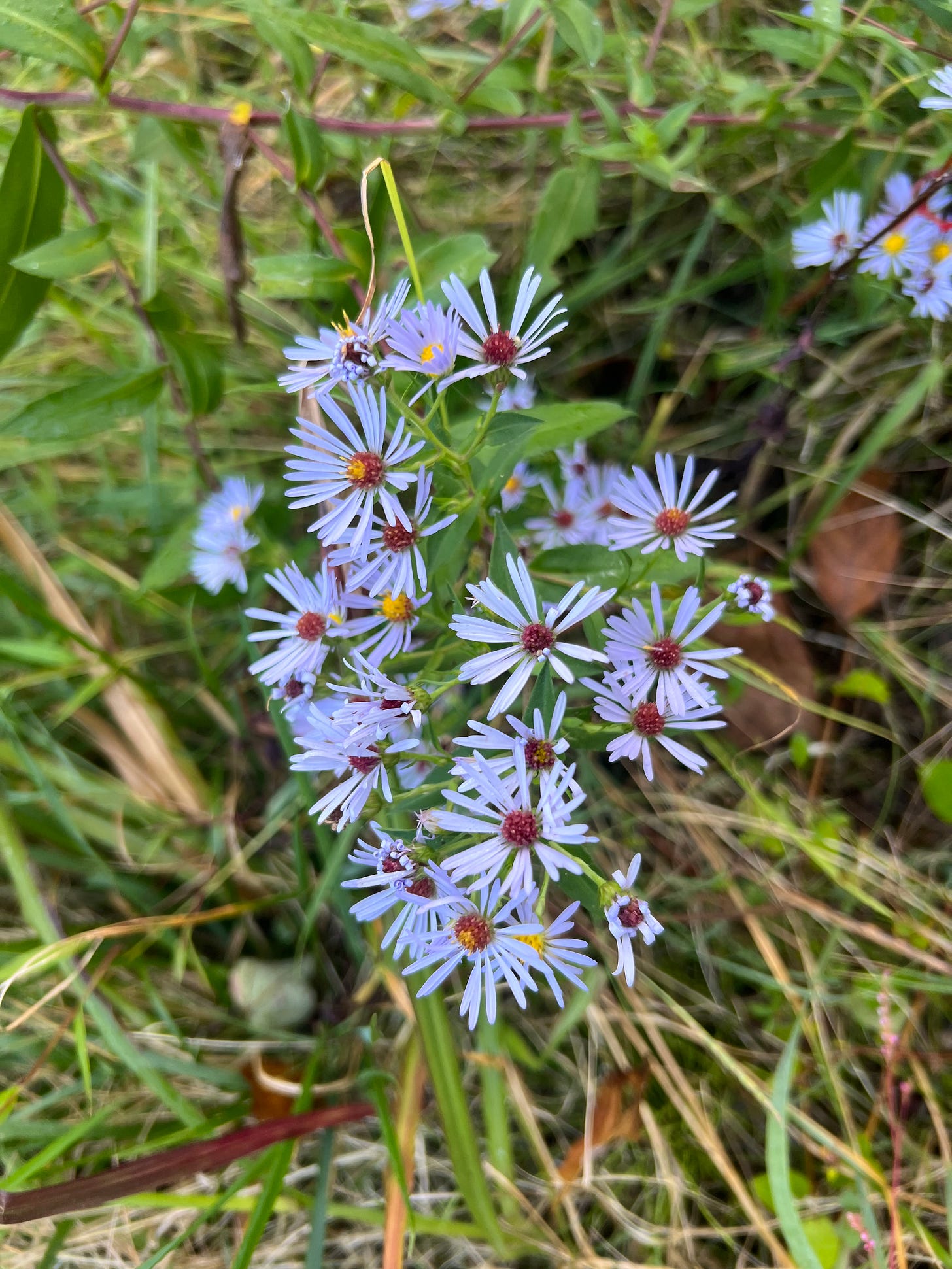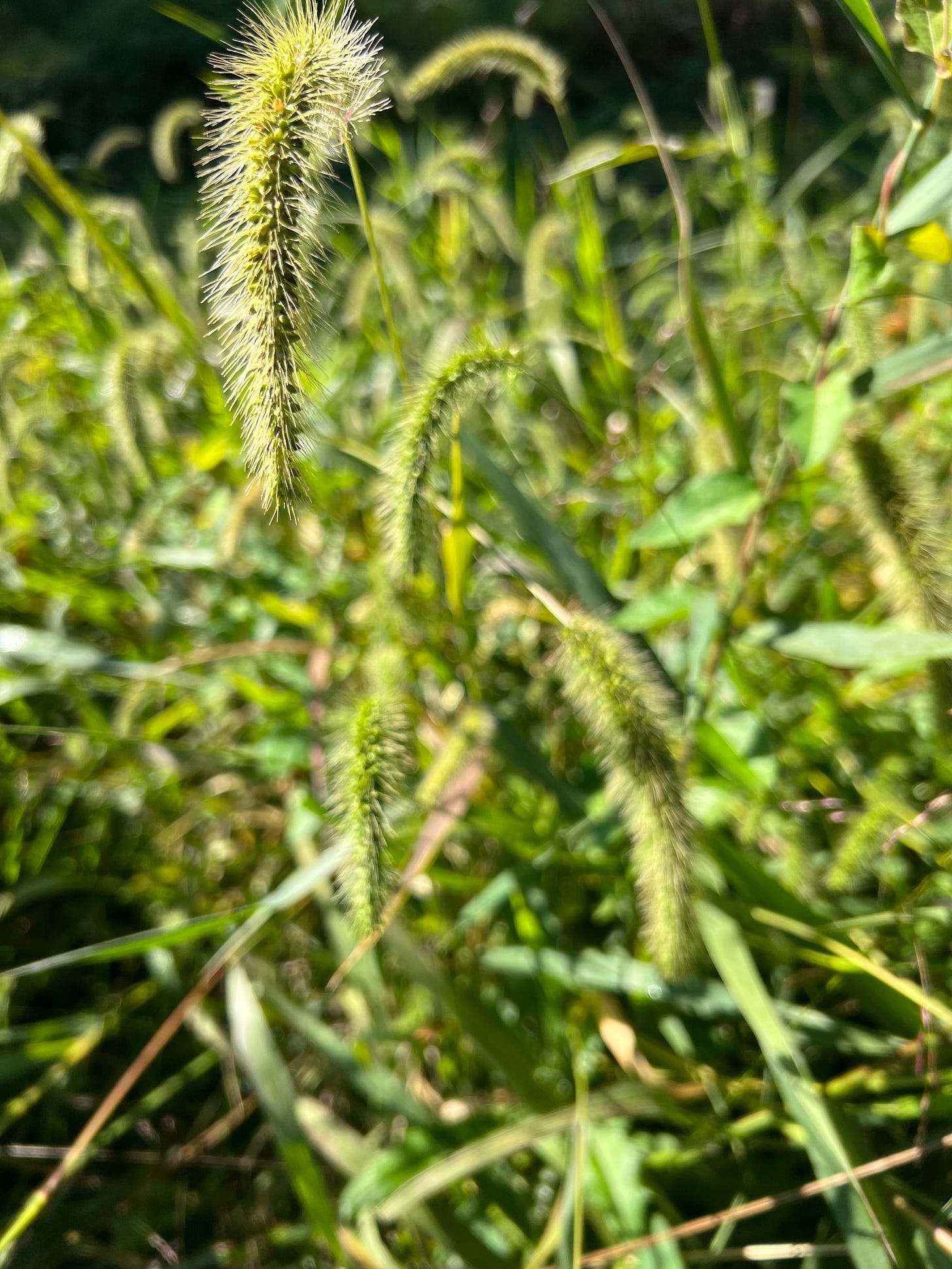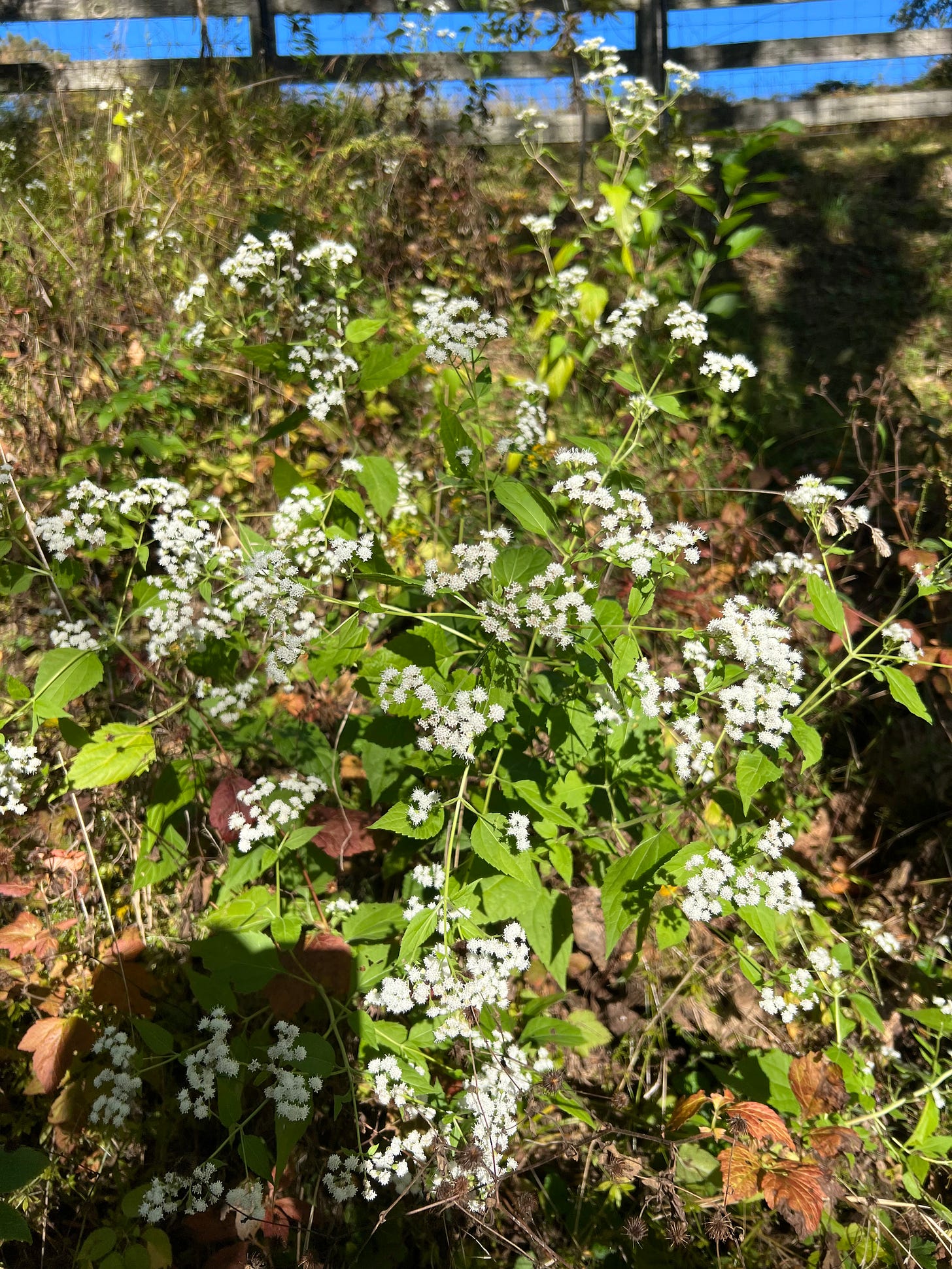Birds and the Backyard Steward
Puddock Hill Journal #25: A recent report from BirdLife International reminds me why our efforts at home are so important.
One day last week, a beautiful sunny fall day with temperatures in the seventies, I sat working on my porch overlooking the pond and wet woods and found myself marveling at the number and variety of birds that were making themselves busy all around me. In a short time, I noticed bluejays, catbirds, bluebirds, and a number of small brown birds in profusion. A Northern flicker flew from branch to branch. A pileated woodpecker worked a dead limb on a tall tuliptree. A great blue heron fished in the pond.
High in the sky, a bald eagle floated by. A week before, we had been showing off the raised beds to another couple over cocktails when a bald eagle flew right over our heads, no more than sixty feet up. Truly an awesome experience!
The next day, things were quieter, and other than the most obvious patterns (robins on the ground in spring, for example), I have never fully understood why some days feature so much more bird activity than others. But I felt gratified to see both the number of birds that day and their diversity, what biologists call species richness.
In moments like that, it is easy to convince ourselves that all is right with the world, that the birds are not in trouble. In this assumption, we would be wrong, however. Anecdotes do not suffice for science.
BirdLife International’s recent State of the World’s Birds report reminds us how much work remains to stabilize a dramatic decline in bird populations, and reaffirms, in my mind, the importance of backyard stewardship.
Why care about birds at all? Because “birds are a barometer of planetary health,” as the report expresses. Furthermore, they “play many important roles in the world’s ecosystems – they are predators, pollinators, seed dispersers, scavengers and ecosystem engineers. Their highly mobile nature means that they can act as a link between distant ecosystems, cycling nutrients and facilitating the dispersal of other organisms.”
But nearly half of all bird species around the world have falling populations, and North America, where we live, is not immune. Since 1970, BirdLife International reports a net loss of 2.9 billion birds or 29% of prior numbers in North America. More specifically, the report notes the following population setbacks:
40% decline in aerial insectivores 1966-2013
42% decline in grassland specialists 1968-2018
37% decline in aridland specialists 1968-2018
14% decline in forest specialists 1968-2018
In the sweep of biological history, these are shocking numbers.
The cause for the declines is multifaceted. Humans reduce bird habitat through development of all kinds, through agricultural expansion, and through logging. Climate change brings increasing weather extremes, wildfires and flooding, further degrading habitat. With encroachment on wild lands, humans spread deadly diseases to animals. The introduction or, at this point, tolerance of invasive species reduces the fruit and insects available for birds’ survival.
We stand at a critical juncture in the history of life on Earth, as the sixth great extinction—and the first great extinction induced by humankind—unfolds before us. The BirdLife International report calls this “a critical decade to act,” writing:
The natural world is in trouble. Human actions are driving species rapidly towards extinction, undermining ecosystem functions and services vital to our own survival. Meanwhile, the climate crisis continues to escalate, threatening biodiversity and human wellbeing across the globe. In recent years, many parts of the world have experienced extreme wildfires, droughts, heatwaves and floods, as human-transformed ecosystems struggle to adapt to climate change. Continuation of these trends will lead to widespread species extinctions, as well as negatively impacting water availability, food security and human health. Tackling these closely interlinked biodiversity and climate crises requires a global effort to bring about transformative change. The coming years have been identified as a ‘critical decade’ to act. We must urgently identify and significantly scale up nature- based solutions to safeguard the natural world, for the benefit of biodiversity and human society.
At Puddock Hill, we have joined this fight. The elements of a bird-friendly property include:
Water. We are fortunate to have two ponds and a stream, all relatively free of pollutants. Any step we take to maintain these water systems first considers the impact on wildlife.
Tall trees. It breaks my heart to see neighbors taking down tall trees that pose no threat to safety. Some species of birds spend their entire lives up in the canopy.
Understory. Other birds nest lower to the ground. We have planted understory trees and shrubs to support their habits.
Standing dead trees. Standing dead trees (called snags) provide food for insects that are in turn eaten by birds, as well as homes for woodpeckers and other species.
Fallen dead trees. Fallen trees support healthy soil regeneration and provide more arthropods for the birds and other critters to eat. If a tree falls in an inconvenient place, we move it somewhere on the property where it can continue to support wildlife as it slowly decays.
Native fruits, berries, seeds and nuts. We plant and encourage a variety of natives that feed birds and other species. Migratory birds especially need native foods to provide the energy required for their long journeys.
Pesticide-free zones. Very few pesticides are narrowly enough targeted to destroy a single pest without consequences for other insects important to the food chain. We rarely use pesticides if at all at Puddock Hill.
Shelter. We provide houses for bluebirds. More important, wild edges help provide a diverse habitat where birds and other animals can naturally shelter.
BirdLife International has identified more than 13,600 Important Bird and Biodiversity Areas in over 200 countries. We do not live in an area so designated, but there are several in the region. Birds fly and, with shifting climate, who knows where they’ll need to settle next.
No individual can act on the scale of substantial NGOs working to preserve our natural environment, but our collective action is an essential piece of the puzzle. And, if you enjoy seeing bluebirds chase flies or eagles soar overhead, the effort comes with its own perks!
The big pond shines on a crisp September morning:
Crooked stem aster (Aster prenanthoides) or Swamp aster (Symphyotrichum puniceum) (not sure) takes its turn in the wet woods:
Closer up:
Non-native Yellow foxtail (Setaria pumila) forms seed heads by the big pond dam:
Native White snakeroot (Ageratina altissima) is still going strong along the upper big pond path:



